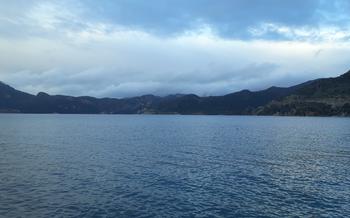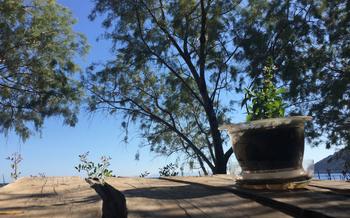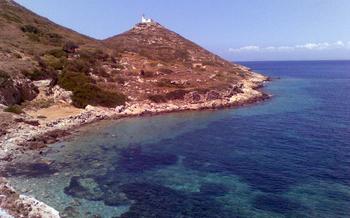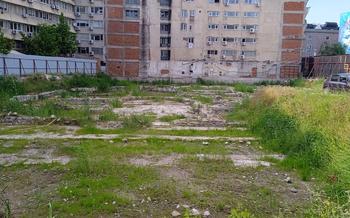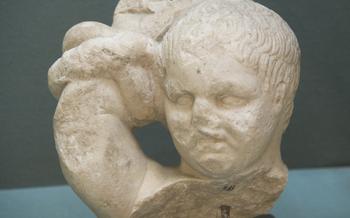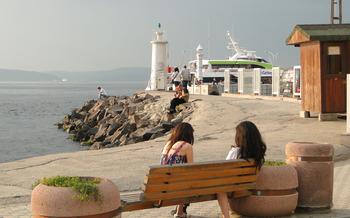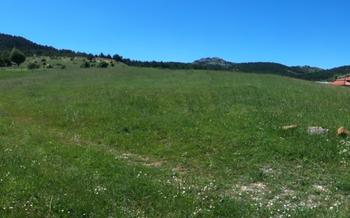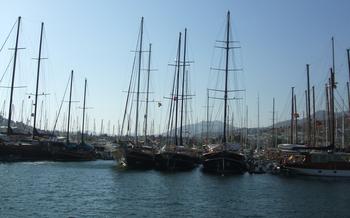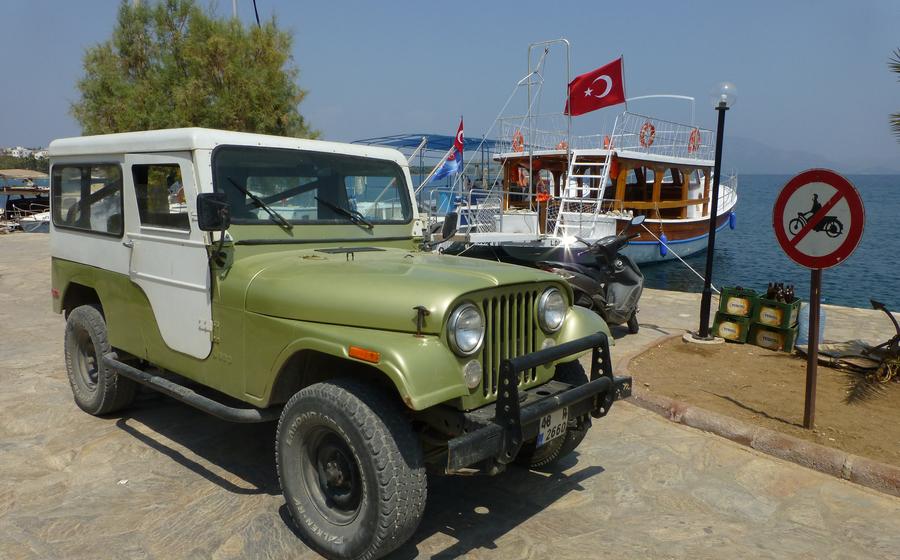
Kapıdağ Peninsula
- Datça: A Hidden Gem in Turkey
- The Kapıdağ Peninsula: A Unique Natural Wonder
- Visiting the Kapıdağ Peninsula: A Practical Guide
- 10 Must-See Places on the Kapıdağ Peninsula
- Outdoor Activities on the Kapıdağ Peninsula
- Beaches on the Kapıdağ Peninsula
- Datça's Culinary Delights
- Handicrafts of the Kapıdağ Peninsula
- Festivals and Events on the Kapıdağ Peninsula
- The History of the Kapıdağ Peninsula
- The Culture of the Kapıdağ Peninsula
- Accommodation Options on the Kapıdağ Peninsula
- Transportation on the Kapıdağ Peninsula
- Safety Tips for Visitors to the Kapıdağ Peninsula
- Insider Tip: The Best Time to Visit the Kapıdağ Peninsula
Datça: A Hidden Gem in Turkey
Datça, a charming town nestled on the southwestern coast of Turkey, is a hidden gem waiting to be discovered. Its unique location on the Datça Peninsula, surrounded by the turquoise waters of the Aegean Sea, makes it a true paradise for nature lovers, history buffs, and beachgoers alike.
The name "Datça" is derived from the ancient Greek word "Dacta," meaning "finger," a fitting description for the peninsula's slender shape that juts out into the sea. Throughout history, Datça has been an important center of civilization, ruled by various empires, including the Persians, Greeks, Romans, Byzantines, and Ottomans. Today, it is a popular destination for both domestic and international tourists seeking refuge from the hustle and bustle of city life.
Datça's serene atmosphere, stunning natural beauty, and rich cultural heritage make it an ideal place to unwind, recharge, and connect with nature. Whether you're looking for a relaxing beach vacation, an adventurous outdoor excursion, or a glimpse into Turkey's fascinating past, Datça has something to offer everyone.
The Kapıdağ Peninsula: A Unique Natural Wonder
The Kapıdağ Peninsula is a beautiful and unique natural wonder located in the Aegean Sea, just off the coast of Datça. The peninsula is known for its stunning scenery, diverse flora and fauna, and many outdoor activities.
The Kapıdağ Peninsula is a mountainous peninsula with a rugged coastline. The peninsula is covered in forests of pine, oak, and olive trees. The peninsula is also home to a variety of wildlife, including deer, wild boar, and rabbits. The peninsula is also home to a variety of birds, including eagles, hawks, and owls.
The Kapıdağ Peninsula offers stunning views of the Aegean Sea and the surrounding mountains. The peninsula is also home to a number of beaches, coves, and bays. The beaches on the Kapıdağ Peninsula are some of the most beautiful in Turkey. The waters are clear and blue, and the sand is white and soft. The coves and bays on the peninsula are also very beautiful. They are perfect for swimming, sunbathing, and relaxing.
The Kapıdağ Peninsula is a great place to enjoy a variety of outdoor activities. The peninsula is a popular destination for hiking, biking, scuba diving, snorkeling, sailing, windsurfing, kayaking, and canoeing.
Visiting the Kapıdağ Peninsula: A Practical Guide
The Kapıdağ Peninsula is a beautiful and unique destination, but it can be difficult to get to and around if you don't know what you're doing. Here are some practical tips to help you plan your trip:
How to get to the Kapıdağ Peninsula
The Kapıdağ Peninsula is located in the southwest of Turkey, on the Aegean Sea. The nearest airport is Dalaman International Airport (DLM), which is about an hour and a half drive from the peninsula. From the airport, you can either rent a car or take a bus to Datça, the main town on the peninsula.
Where to stay on the Kapıdağ Peninsula
There are a variety of accommodation options available on the Kapıdağ Peninsula, from budget hostels to luxury resorts. The best place to stay depends on your budget and your needs. If you're looking for a budget option, there are several hostels and guesthouses in Datça. If you're looking for something more luxurious, there are several hotels and resorts located along the coast.
Where to eat on the Kapıdağ Peninsula
There are a variety of restaurants and cafes on the Kapıdağ Peninsula, serving everything from traditional Turkish cuisine to international fare. The best way to find a good restaurant is to ask around for recommendations. Some of the most popular dishes include meze (small plates of appetizers), grilled fish, and kebabs.
What to pack for a trip to the Kapıdağ Peninsula
The Kapıdağ Peninsula has a Mediterranean climate, with hot, dry summers and mild, wet winters. The average temperature in July and August is around 30 degrees Celsius (86 degrees Fahrenheit). If you're visiting during the summer months, be sure to pack light, airy clothing. You'll also need a swimsuit, sunscreen, and sunglasses. If you're planning on doing any hiking, be sure to pack comfortable shoes.
10 Must-See Places on the Kapıdağ Peninsula
The Kapıdağ Peninsula is home to a wealth of natural and historical treasures. Here are 10 of the must-see places that you should visit during your trip:
-
Knidos Ancient City: Located at the southwestern tip of the peninsula, Knidos was once a major city in the ancient Greek world. Today, its ruins are a popular tourist attraction, and visitors can explore the remains of its temples, amphitheater, and other buildings.
-
Palamutbükü Bay: This picturesque bay is known for its crystal-clear waters and stunning views of the Aegean Sea. It is a great place to relax on the beach, swim, or go for a boat trip.
-
Tekirbahçe (Goat Garden) Bay: This small bay is a hidden gem, and it is perfect for those who are looking for a quiet place to swim and sunbathe.
-
Ovabükü Bay: This bay is known for its long stretch of sandy beach, and it is a great place to go for a swim or play in the sand.
-
Hayıtbükü Bay: This bay is home to a number of fish farms, and it is a great place to go for a swim or go diving.
-
Akçabük Beach: This beach is located near the town of Datça, and it is a popular spot for swimming, sunbathing, and water sports.
-
Datça Old Town: The old town of Datça is a charming maze of narrow streets and whitewashed houses. It is home to a number of shops, restaurants, and cafes, and it is a great place to learn about the history and culture of the region.
-
Kurubük Bay: This bay is located on the eastern side of the peninsula, and it is known for its clear waters and stunning views of the Aegean Sea.
-
Pazarlı Bay: This bay is home to a small fishing village, and it is a great place to buy fresh fish and seafood.
-
Mesudiye Castle: This castle is located on a hilltop overlooking the town of Datça. It was built in the 15th century by the Ottoman Turks, and it is a popular tourist attraction.
Outdoor Activities on the Kapıdağ Peninsula
The Kapıdağ Peninsula is a paradise for outdoor enthusiasts, offering a wide range of activities to suit all tastes and fitness levels. Whether you're a seasoned hiker, a mountain biker, or simply looking for a relaxing day on the beach, you're sure to find something to keep you entertained here.
Hiking is one of the most popular ways to explore the peninsula's stunning natural scenery. There are trails to suit all abilities, from gentle strolls along the coast to challenging treks up into the mountains. Some of the most popular hiking trails include the trail to Knidos Ancient City, the trail to Palamutbükü Bay, and the trail to Tekirbahçe Bay.
Biking is another great way to see the peninsula. There are several bike rental shops in Datça, and you can choose from a variety of routes, depending on your fitness level and interests. Some of the most popular biking routes include the route to Knidos Ancient City, the route to Palamutbükü Bay, and the route to Tekirbahçe Bay.
Scuba diving and snorkeling are both excellent ways to explore the peninsula's rich marine life. There are several dive sites to choose from, and you can see a variety of marine creatures, including colorful fish, sea turtles, and dolphins.
Sailing, windsurfing, kayaking, and canoeing are all popular water sports that can be enjoyed on the Kapıdağ Peninsula. There are several rental shops where you can rent equipment, and you can find a variety of places to launch your boat or kayak.
No matter what your interests are, you're sure to find something to keep you entertained on the Kapıdağ Peninsula. So get out there and explore!
Beaches on the Kapıdağ Peninsula
The Kapıdağ Peninsula is home to a variety of stunning beaches, each with its own unique character. Whether you're looking for a secluded spot to relax or a lively beach with plenty of activities, you're sure to find the perfect beach for you on the Kapıdağ Peninsula.
The best beaches for swimming:
- Akçabük Beach: This beautiful beach is located on the northern coast of the peninsula and is known for its crystal-clear waters and soft, sandy shores. It's a great place to swim, sunbathe, and build sandcastles.
- Ovabükü Bay: This sheltered bay is located on the southern coast of the peninsula and is a popular spot for swimming, snorkeling, and diving. The waters are calm and clear, and there are plenty of fish to see.
- Hayıtbükü Bay: This small, secluded bay is located on the western coast of the peninsula and is a great place to escape the crowds. The waters are clear and calm, and the beach is surrounded by lush vegetation.
The best beaches for sunbathing:
- Palamutbükü Bay: This long, sandy beach is located on the northern coast of the peninsula and is a popular spot for sunbathing and swimming. The waters are shallow and calm, and the beach is surrounded by pine trees, which provide shade from the sun.
- Kurubük Bay: This small, secluded bay is located on the southern coast of the peninsula and is a great place to relax and sunbathe. The beach is surrounded by high cliffs, which protect it from the wind, and the waters are calm and clear.
The best beaches for water sports:
- Tekirbahçe (Goat Garden) Bay: This beach is located on the western coast of the peninsula and is a popular spot for windsurfing and kitesurfing. The winds are strong and consistent, and the waves are perfect for these sports.
- Ovabükü Bay: In addition to being a great spot for swimming and snorkeling, Ovabükü Bay is also a popular place for kayaking and canoeing. The waters are calm and clear, and there are plenty of places to explore along the coastline.
Datça's Culinary Delights
The culinary scene of Datça is a tapestry of flavors that reflects the region's rich history and cultural heritage. From traditional Turkish dishes to modern culinary creations, there's something to satisfy every palate in Datça.
One of the must-try dishes in Datça is "girit ezmesi," a delicious spread made from tomatoes, garlic, walnuts, and olive oil. Served with fresh bread, this flavorful dip is a perfect appetizer or snack. Another local specialty is "kabak çiçeği dolması," delicate zucchini flowers stuffed with rice, herbs, and spices, then lightly fried to perfection.
Seafood lovers will delight in the bounty of fresh catches from the nearby Aegean Sea. Grilled octopus, sea bass, and red mullet are just a few of the delectable options available in Datça's restaurants. For a truly unique culinary experience, try "mürekkep balığı dolması," tender squid stuffed with aromatic rice and herbs.
Datça is also renowned for its olive oil, which has a distinct fruity flavor and aroma. The region's olive groves produce some of the finest olive oil in Turkey, and visitors can sample and purchase this liquid gold at local markets and shops.
No visit to Datça is complete without indulging in the region's sweet treats. "Datça bademi," a delectable almond cookie, is a local specialty that is both crunchy and melt-in-your-mouth delicious. For a refreshing dessert, try "kaymaklı incir tatlısı," a traditional Turkish dessert made with fresh figs, cream, and honey.
Whether you're seeking traditional Turkish cuisine or modern culinary delights, Datça has something to satisfy every foodie's cravings. Embrace the culinary adventures that await you in this charming Turkish town.
Handicrafts of the Kapıdağ Peninsula
The Kapıdağ Peninsula is known for its rich tradition of handicrafts, which have been passed down from generation to generation. These handicrafts are a reflection of the peninsula's unique culture and history and are a testament to the skill and creativity of the local people.
Some of the most popular handicrafts of the Kapıdağ Peninsula include ceramics, textiles, and woodwork. Ceramic items such as plates, bowls, and vases are often decorated with intricate patterns and designs that reflect the region's natural beauty. Textiles such as carpets, rugs, and kilims are made from wool or cotton and feature colorful geometric patterns. Woodwork items such as furniture, utensils, and decorative pieces are often made from olive wood or pine, and are known for their durability and beauty.
Visitors to the Kapıdağ Peninsula can find a variety of handicrafts for sale in local shops and markets. These handicrafts make for unique and memorable souvenirs, and are a great way to support the local economy.
The process of creating these handicrafts is often time-consuming and requires a great deal of skill. For example, ceramics are made by hand using a potter's wheel, and then fired in a kiln to achieve their final form. Textiles are woven on traditional looms, and the patterns are often created using natural dyes. Woodwork items are carved and shaped by hand, and then finished with a protective sealant.
The history of handicrafts on the Kapıdağ Peninsula dates back centuries. The region has a long tradition of trade and commerce, and handicrafts were an important part of the local economy. The peninsula's unique location, at the crossroads of the Aegean and Mediterranean Seas, meant that it was influenced by a variety of cultures, which helped to shape the development of its handicrafts.
Today, handicrafts continue to play an important role in the culture of the Kapıdağ Peninsula. They are a source of income for many local people, and they help to preserve the region's unique identity. Visitors to the peninsula can learn more about the history and culture of handicrafts by visiting local museums and workshops, or by taking part in a traditional handicraft course.
Festivals and Events on the Kapıdağ Peninsula
The Kapıdağ Peninsula is home to a variety of festivals and events throughout the year, each showcasing the unique culture and traditions of the region. The most popular festivals include the Datça Almond Festival, held in February, the Datça Olive Festival, held in October, and the Regnum Carya Golf Resort Open, held in September. These festivals offer a chance to experience the local cuisine, music, and dance, as well as participate in traditional games and competitions. Other popular events include the Datça International Music Festival, the Datça International Film Festival, and the Datça International Art Festival, all of which attract visitors from around the world. These festivals and events are a great way to learn about the history, culture, and traditions of the Kapıdağ Peninsula, and to experience the warm hospitality of the local people.
The History of the Kapıdağ Peninsula
The Kapıdağ Peninsula has a rich and varied history, dating back to ancient times. In the 5th century BC, the peninsula was home to the Greek city-state of Knidos, which was one of the most important cities in the region. Knidos was a major center of trade and culture, and its ruins are still visible today.
In the Roman period, the Kapıdağ Peninsula was part of the Roman province of Asia. The Romans built several roads and bridges on the peninsula, and they also introduced Christianity to the region. After the fall of the Roman Empire, the peninsula was ruled by the Byzantines, who built several churches and monasteries.
In the 15th century, the Kapıdağ Peninsula was conquered by the Ottoman Turks. The Ottomans ruled the peninsula for over 500 years, and they left a lasting impact on the region. The Ottomans built several mosques and madrasas on the peninsula, and they also introduced Islam to the region.
In the 19th century, the Kapıdağ Peninsula was visited by several European travelers, who were impressed by its natural beauty and its rich history. In the early 20th century, the peninsula was a popular destination for Turkish tourists, who came to enjoy its beaches and its historical sites.
Today, the Kapıdağ Peninsula is a popular tourist destination for both domestic and international visitors. The peninsula is home to a variety of historical sites, including the ruins of Knidos, the Byzantine churches and monasteries, and the Ottoman mosques and madrasas. The peninsula is also home to a variety of natural attractions, including its stunning beaches, its crystal-clear waters, and its lush forests.
The Culture of the Kapıdağ Peninsula
The Kapıdağ Peninsula is home to a unique culture that has been shaped by centuries of history and tradition. The local people are known for their warm hospitality and their love of life. They are also fiercely proud of their heritage and their traditions.
One of the most important aspects of Kapıdağ culture is the role of family. Families are close-knit and supportive, and they play a vital role in the community. They are also the keepers of tradition, and they pass down their customs and beliefs from generation to generation.
Another important aspect of Kapıdağ culture is the role of religion. The majority of the population is Muslim, and religion plays an important role in everyday life. There are many mosques on the peninsula, and people attend prayer services regularly. Religion also plays a role in the local festivals and celebrations.
The Kapıdağ Peninsula is also home to a number of traditional crafts and industries. These include fishing, farming, and weaving. The local people are skilled artisans, and they produce a variety of beautiful products, including carpets, pottery, and jewelry.
In recent years, tourism has played an increasingly important role in the culture of the Kapıdağ Peninsula. The peninsula is now a popular destination for both domestic and international tourists, and this has led to a number of changes in the local culture. For example, the local people have become more accustomed to dealing with foreigners, and they are more likely to speak English. However, the local culture has remained strong, and the people of the Kapıdağ Peninsula are still proud of their heritage and their traditions.
Accommodation Options on the Kapıdağ Peninsula
The Kapıdağ Peninsula offers a wide range of accommodation options to suit all budgets and preferences. From budget-friendly hostels to luxurious resorts, there is something for everyone on this beautiful peninsula.
For those on a tight budget, there are several hostels and guesthouses that offer basic but comfortable accommodation. These hostels are often located in the center of town and are a great way to meet other travelers.
For those looking for a more comfortable stay, there are a number of mid-range hotels and resorts to choose from. These hotels typically offer private rooms with en-suite bathrooms, as well as a variety of amenities such as swimming pools, restaurants, and bars.
For those who want to splurge, there are a number of luxury resorts located on the peninsula. These resorts offer stunning views of the sea, as well as a variety of amenities such as private beaches, spas, and gourmet restaurants.
No matter what your budget or preferences, you are sure to find the perfect accommodation for your stay on the Kapıdağ Peninsula.
Insider Tip:
If you are traveling on a budget, consider staying in a hostel or guesthouse. These hostels are often located in the center of town and are a great way to meet other travelers.
Transportation on the Kapıdağ Peninsula
The Kapıdağ Peninsula is easily accessible by both land and sea. Visitors can arrive by car, bus, or ferry.
-
By car: The peninsula is connected to the mainland by a scenic road that winds its way through the mountains. The drive from Datça to the tip of the peninsula takes about an hour.
-
By bus: Several bus companies offer regular service to the Kapıdağ Peninsula from Datça and other nearby towns. The journey takes about an hour and a half.
-
By ferry: There are also several ferry companies that offer service to the Kapıdağ Peninsula from Datça and other nearby towns. The ferry ride takes about 45 minutes.
Once on the peninsula, visitors can get around by car, bicycle, or on foot. There are several car rental companies in Datça, and bicycles can be rented from most hotels and resorts. The peninsula is also well-suited for walking, as there are many trails that wind their way through the mountains and along the coast.
Safety Tips for Visitors to the Kapıdağ Peninsula
The Kapıdağ Peninsula is a generally safe destination for visitors. However, as with any travel destination, there are certain risks that visitors should be aware of and precautions that they can take to stay safe.
Some of the specific risks that visitors to the Kapıdağ Peninsula should be aware of include:
- Petty crime. Petty crime, such as pickpocketing and theft, can occur in tourist areas. Visitors should be aware of their surroundings and take precautions to protect their belongings, such as keeping valuables in a safe place and not leaving bags unattended.
- Traffic accidents. The roads on the Kapıdağ Peninsula can be narrow and winding, and traffic can be heavy during the summer months. Visitors should drive carefully and be aware of other vehicles, especially when driving at night.
- Natural hazards. The Kapıdağ Peninsula is prone to earthquakes and wildfires. Visitors should be aware of the risks and take precautions, such as having a plan in place in case of an emergency.
Visitors to the Kapıdağ Peninsula can take a number of precautions to stay safe, including:
- Be aware of your surroundings. Pay attention to the people and activities around you, and be aware of anything that seems out of place.
- Take care of your belongings. Keep your valuables in a safe place, such as a hotel safe or a money belt. Don't leave bags unattended, and be careful when using ATMs or credit cards.
- Drive carefully. Obey the speed limits and be aware of other vehicles, especially when driving at night.
- Be prepared for emergencies. Have a plan in place in case of an emergency, such as an earthquake or a wildfire. Know where to go for help and how to contact the authorities.
By following these safety tips, visitors to the Kapıdağ Peninsula can help to ensure that they have a safe and enjoyable trip.
Insider Tip: The Best Time to Visit the Kapıdağ Peninsula
The best time to visit the Kapıdağ Peninsula is in the shoulder seasons, from April to May and from September to October. During this time, the weather is still warm and sunny, but the crowds are smaller and the prices are lower. If you are looking for a more secluded experience, this is the ideal time to visit.
If you are interested in hiking or biking, the best time to visit the Kapıdağ Peninsula is in the spring or fall, when the weather is cool and comfortable. The trails are also less crowded during this time, so you can enjoy a more peaceful experience.
If you are interested in swimming or sunbathing, the best time to visit the Kapıdağ Peninsula is in the summer, when the water is warm and the beaches are at their best. However, it is important to note that the beaches can get crowded during this time, so it is best to avoid the peak season if you are looking for a more relaxed experience.
No matter when you choose to visit, the Kapıdağ Peninsula is a beautiful and welcoming destination that offers something for everyone. So start planning your trip today!
